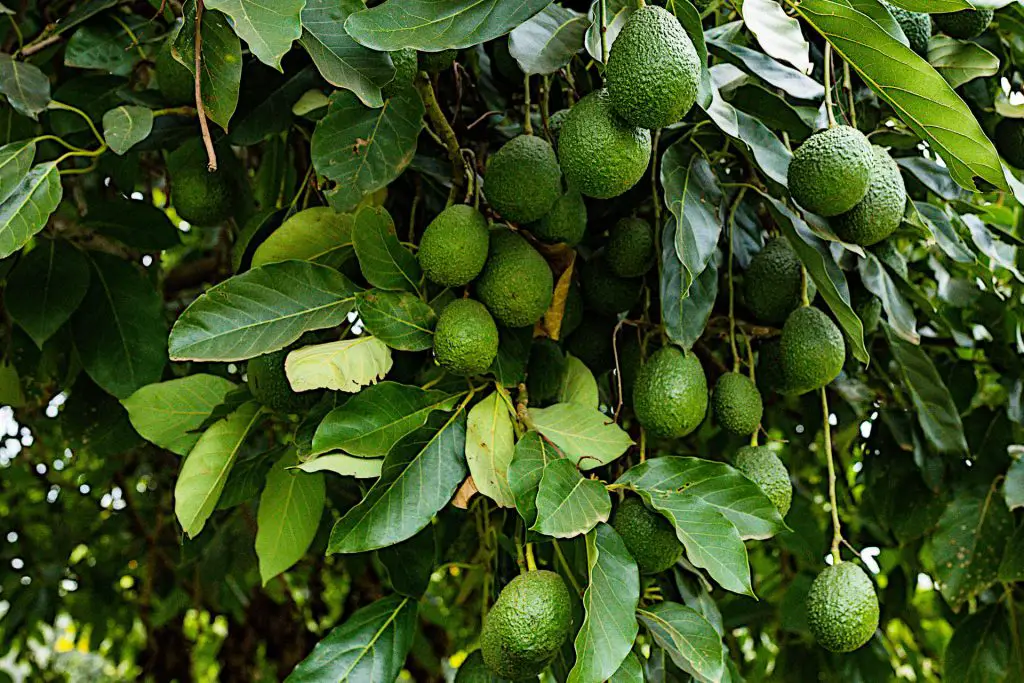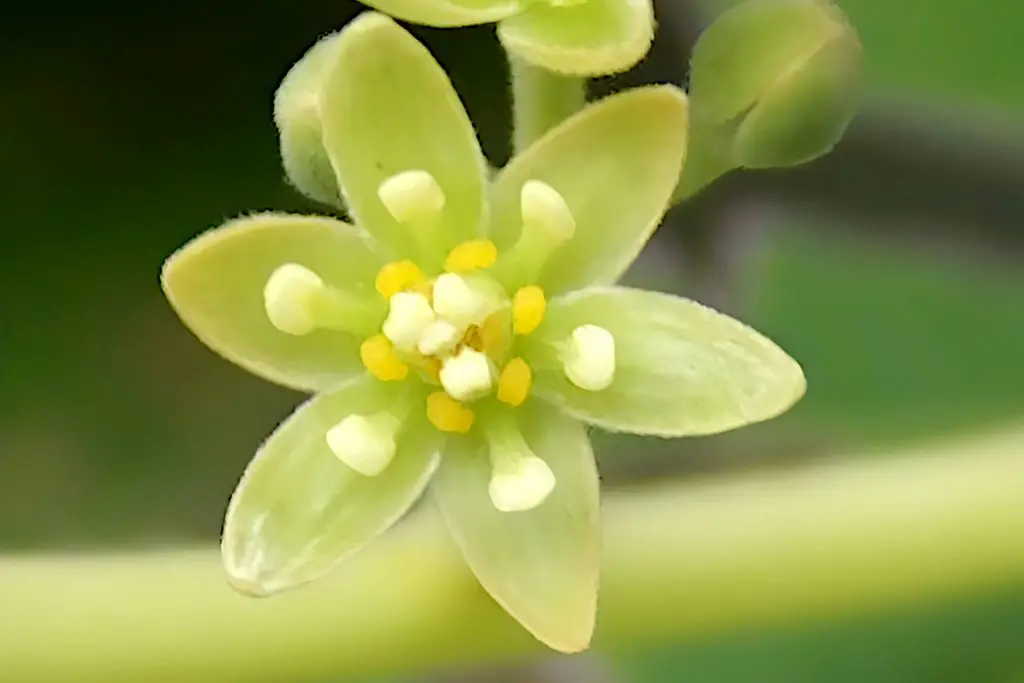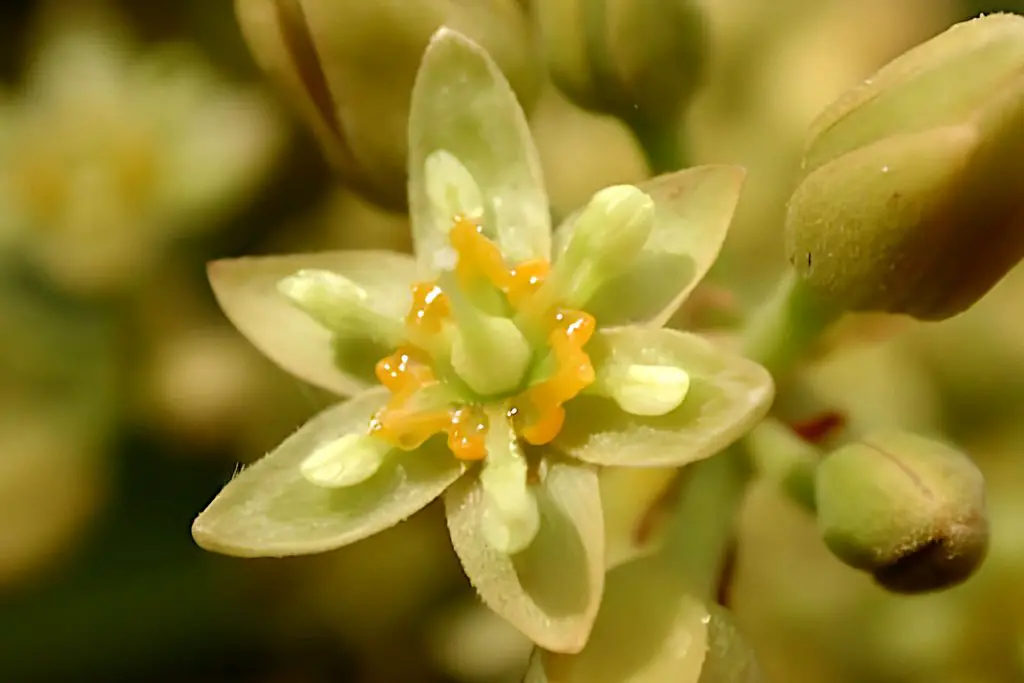Hand Pollinating Avocado Trees
Avocado trees (persea americana) are fairly unique among fruit trees in that they are not self-fertile. In their natural habitats, avocado trees produce both male and female blooms on the same tree, albeit at different periods. This is different from other fruit trees which are self-fertile.
This means that in a natural habitat, for an avocado tree to produce fruit cross-pollination is required and for this, you need more than one tree. Of course, if you have a single tree in your garden, this may or may not become pollinated depending on whether there are other avocado trees near for bees and insects to do their work.
If you are growing an avocado tree indoors this is even more of an issue so another solution is required. In this article, we will look at ways that you can intervene in the process by hand pollinating avocado trees, so in effect, they become self-fertile.
Self-Fertile Fruit Tree Flowering and Pollination

The Majority of fruit plants are self-fertile, which means, unlike avocado trees, only need a single individual plant is needed to produce fruit. There are two different varieties of self-fertile fruiting plants and they differ in the way they flower.
The first kind is an individual flower, which has both male and female reproductive elements on the same flower. The only thing required for these plants’ flowers to pollinate is movement such as wind or vibration to take place. Examples of this time of fruiting plant include peppers and tomatoes.
The second type of self-fertile fruit plant produces both male and female flowers that are opened simultaneously. Again not much more than a breeze or a shake will allow these plants to pollinate. Examples of plants of this type include squash and cucumbers.
Avocado Trees Flowering Cycles
With avocado trees, the flowers combine aspects of both the first and the second categories of other fruiting trees. However, with avocado, the flowers open and close in a twice-daily cycle, changing sex in the process, which precludes self-pollination without an external agent.
The various varieties of avocado trees are split into two types of cultivars, Type A and Type B, each type has flowers that contain both male and female reproductive mechanisms which is known as ‘protogynous dichogamy’. The difference between the two types relates to how the ‘protogynous dichogamy’ of the trees and flowers works.
Trees that are classed as Type A trees produce female flowers in the morning and male flowers in the afternoon, while trees classed as Type B trees will first have male flowers open in the morning and female in the afternoon. The pattern of opening and closing reverses for both types every other day.[1]
The opening and closing of these flowers are synchronous. This means that either all flowers are male or female at any one time. The problem with this is that it affects pollination in that the primary method is through insects such as butterflies and bees. Of course, insects can only collect pollen from one type of flower at a time.
If you are growing indoors, there are not likely to be any bees around, to transfer pollen between the two types of flowers in this manner, and even if there were, you would need at least two trees. Thus, pollination for a single tree would be difficult and without pollination, the resulting fruit set will be low or zero.
The Effect of Climate
Another factor that impacts pollination is climate. The native habitat of Avocado trees is tropical, they originate from Mexico and Central America where temperature variations are less pronounced. The effect of this is that fluctuations in temperature can affect the tree’s respiration rate.
This interference in respiration rate can result in an overlap in the process through which flowers transition from male to female. If conditions are conducive it can, in some circumstances, cause avocado trees to produce both male and female flowers, for a short period, at the same time.
Even when this is the case you would need external agents such as honey bees to enable avocado tree pollination. In addition, the warmer the weather, the less likely for the tree to lose sync.
Hand Pollination

Because of the way avocado cultivars flower, and the uncertainty of relying on climatic conditions to help, better control pollination in avocados, you will have to manually intervene. With only a single tree cross-pollination will be unlikely, so you have to force self-pollination by hand pollinating the flowers.
Forced self-pollination occurs when an individual avocado tree uses its own pollen to fertilize its own blossoms. The peculiar blossoming behavior serves to lessen the possibility of this occurring naturally by reducing the presence of self-pollen during the receptive phases of the female stages. With hand pollination, though, this can be overridden.
The process of manually pollinating the flowers on your tree is fairly easy. In the initial flowering, the cycle that avocado trees follow, there is the mass production of flowers that fall to the ground. On a mature tree outside this can be thousands of flowers. The purpose of this is to get insects to interact with pollen as much as possible and cross-pollinate the flowers on other trees but you can use these flowers to perform the task yourself.
Simplest Method of Hand Pollination
In avocado trees, the flowers are small, and light green with six petals. The male flower has a long, thin stem with a small ball at the end. This is the stamen, which produces the pollen. The female flower has a shorter stem and a wider petal structure.
Equipment
- A small paintbrush
- A small dish
- A ladder

As you can see you need very little in terms of equipment. The main requirement is a little bit of patience to do the job. There are many ways to pollinate avocado flowers by hand, but two of the most common is to transfer the avocado pollen from the stamen of a male flower to a female blossom using an object such as a paintbrush, makeup brush, cotton swab, or through flower to flower contact.
You can use recently fallen male flowers, or collect pollen when the flower blooms male. Once you have your male flowers make sure that the pollen is attached to the stamen. The simplest method is to take these flowers and brush them against the female stigma (top of the pistil) when it next opens as a female. You may need to do this several times to make sure that a good amount of the pollen is transferred.
Brush the pollen gently, either keeping it on the brush or transfer to a small dish. Then, when they next open as a female, gently brush pollen on the female stigma of the flower. Again it is good practice to do this several times to make sure that as much of the pollen is transferred as possible.
In fact, you should repeat this process both morning and afternoon for several days to ensure that as many flowers as possible are pollinated so you can achieve the biggest yield of avocado fruit.
Summary: Hand Pollinating Avocado Trees
In truth, avocado trees are designed by nature to cross-pollinate, as such, by having a second tree of a different type, you are far more likely to produce a good yield of fruit. In a domestic setting, you may well not have yard space for more than one tree. No matter how well you fertilize and care for it unless you intervene and hand pollinate you are not going to get a good harvest.
With indoor trees, this is even more of an issue as there is less temperature variance and unlikely to be too many insects that will act as external agents to pollinate the flowers. However, by hand pollinating even indoor trees can bear good amounts of fruit.
Notes:
- Department of Primary Industries and Regional Development’s Agriculture and Food, Western Australia: Growing avocados: flowering, pollination and fruit set
